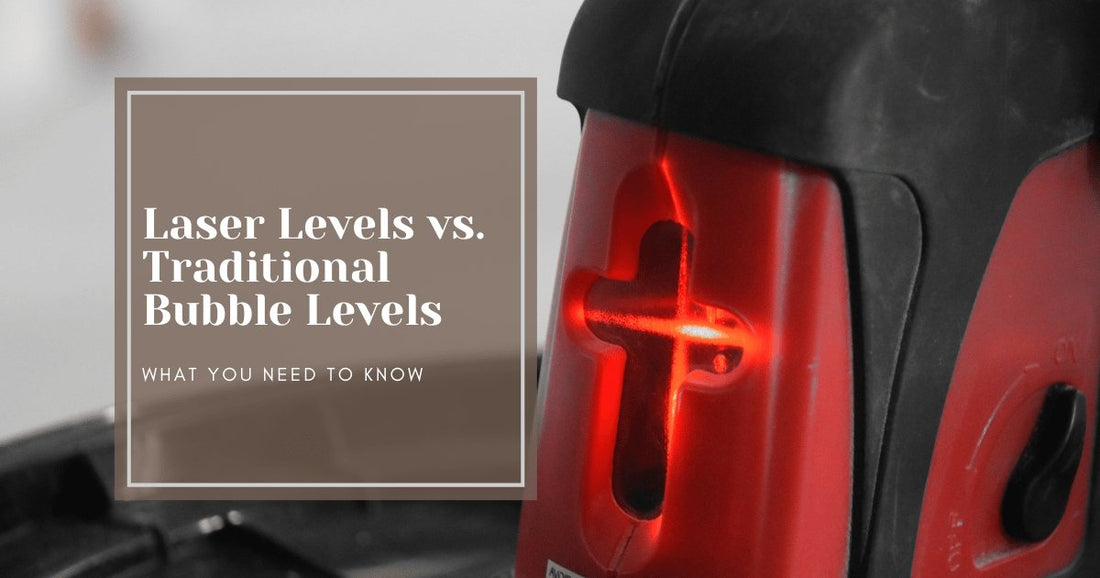In construction projects, accuracy and precision are essential to achieve quality results. Whether you are a professional contractor or a DIY enthusiast, you need the right tools to measure and level surfaces accurately. Two of the most common tools used in construction are Laser Levels and Traditional Bubble Levels. Both tools are designed to help you measure and level surfaces, but they work differently. In this article, we will provide a comprehensive comparison of Laser Levels vs. Traditional Bubble Levels to help you determine which tool is better suited for your needs.
How Do Laser Levels Work?
Laser Levels use laser beams to project a straight line on a surface, allowing you to mark and level it with precision. The laser beam is emitted from a diode that rotates rapidly, creating a 360-degree line. Laser Levels can be mounted on tripods or placed on a flat surface to project a line horizontally or vertically. Some Laser Levels even come with multiple beams that can project lines at different angles, making them ideal for complex projects.
Pros and Cons of Using Laser Levels:
Pros:
- Laser Levels are incredibly accurate and precise, providing more accurate results than Traditional Bubble Levels.
- They are easy to use and can be set up quickly, saving you time and effort.
- Laser Levels can project lines over long distances, making them ideal for large-scale projects.
- They can be used in bright sunlight, unlike Traditional Bubble Levels, which can be difficult to read in bright light.
Cons:
- Laser Levels require batteries, which can run out quickly, making them less reliable than Traditional Bubble Levels.
- They can be expensive, especially if you need a high-end model with multiple beams and features.
- They can be easily affected by vibrations and movement, which can impact their accuracy.
How Do Traditional Bubble Levels Work?
Traditional Bubble Levels use a liquid-filled tube with a bubble to indicate whether a surface is level or not. The bubble moves within the tube until it reaches the center, indicating that the surface is level. Bubble Levels can be handheld or mounted on a surface to measure the level of floors, walls, and ceilings.
Pros and Cons of Using Traditional Bubble Levels:
Pros:
- Traditional Bubble Levels are affordable and widely available, making them a popular choice for DIY enthusiasts and professionals.
- They do not require batteries, making them reliable and easy to use.
- They can withstand vibrations and movement, making them more accurate than Laser Levels in certain situations.
- They can be used in any location, as they do not rely on laser beams.
Cons:
- Traditional Bubble Levels are less accurate than Laser Levels, as they can be affected by slight variations in the surface being measured.
- They can be difficult to use in low light conditions or when working at a distance.
- They can only measure a single plane, making them less suitable for complex projects.
Laser Levels vs. Traditional Bubble Levels: A Side-by-Side Comparison
| Feature | Laser Levels | Traditional Bubble Levels |
|---|---|---|
| Accuracy | Very high | Moderate |
| Ease of Use | Easy | Easy |
| Setup Time | Quick | Quick |
| Versatility | High | Low |
| Suitability for Large Projects | High | Low |
| Suitability for Complex Projects | High | Low |
| Impact of Vibrations and Movement | High | Low |
| Battery Requirement | Yes | No |
| Price | Expensive | Affordable |
FAQs about Laser Levels and Traditional Bubble Levels
Q: Can Laser Levels be used outdoors? A: Yes, Laser Levels can be used outdoors, even in bright sunlight.
Q: Do Traditional Bubble Levels require calibration? A: Yes, Traditional Bubble Levels require calibration before use to ensure accuracy.
Q: Can Laser Levels project lines at different angles? A: Yes, some Laser Levels come with multiple beams that can project lines at different angles.
Q: Do Laser Levels require special training to use? A: No, Laser Levels are easy to use and do not require any special training.
Q: Can Traditional Bubble Levels measure vertical surfaces? A: Yes, Traditional Bubble Levels can measure both horizontal and vertical surfaces.
Conclusion: Which Tool Should You Choose?
Both Laser Levels and Traditional Bubble Levels have their advantages and disadvantages. Laser Levels are more accurate and versatile, making them suitable for large and complex projects. However, they can be expensive and require batteries, making them less reliable in certain situations. Traditional Bubble Levels are affordable, easy to use, and do not require batteries, making them reliable and suitable for simple projects. Ultimately, the choice between Laser Levels vs. Traditional Bubble Levels depends on the specific needs of your project. Consider the factors discussed in this article and make an informed decision.

